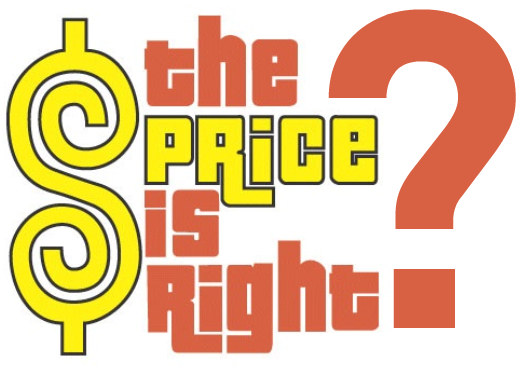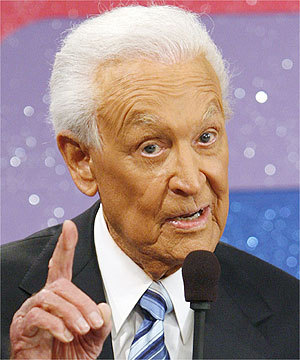
I get asked this question a lot so I figured I would simply layout a number of the reasons why watches are expensive in an article. There is a threshold issues though – and that is between “expensive” and “overpriced.” Those two items are not mutually exclusive, and are different.
Expensive just means that something costs a lot, but there is good reason for the price. Overpriced means that something simply has a cost that is vastly in excess of the materials cost + marketing costs + development costs + manufacturing cost + distribution costs + fair profit. Expensive watches and overpriced watches are very common. And unfortunately overpriced ones are too common. At the same time, you need to ask yourself, “if a brand asks a certain overpriced amount for a watch, but is still able to sell them, can you still regard the watch as being overpriced?” The answer is yes, but you still want the watch, don’t you?
I will now go ahead and list many (but not all) of the reasons that watches are so expensive. These are both in defense of the industry, and expositive issues that are less glamorous in regard to the luxury industry.
1. Watches can be expensive to make and develop.It is amusing how often I hear about watch movements that took years to get working. Amusing in the sense that a team would spend so much time on a “problem” that already has been solved, but they want to do so in a “different way.” Meaning that they must design a new watch movement to tell the time, but make it just different enough to “call their own.” In today’s world highly trained micro mechanical engineers plot out models for new watch movements and modules on computers before they are ever made. This process can take years. Especially if the desire exists for something unique or complications that are difficult to make.
Watch movements are not only expensive to dream up, but it is also expensive to get movements to work and be durable. This requires even more testing. Millions can go into the development of a new “calibre.” And that is just the movement. Designing a watch case and bracelet might be easier because it is not a machine, but it is tough – especially when you are working with tolerances that are often non existent. Nice watches use good materials, bottom line. The best materials require enormous amounts of hand attention or labor. While machines are often employed to make tiny parts, high-end watches employ teams of people to go over each part and delicately finish them and often decorate them.
A good timepiece can take between a few days to many months to produce. Even brands with high demand often cannot get enough product to market. This problem creates increased market demand and a bottleneck of production. Many brands would like to make more watches than they do, but this isn’t always easy or cost effective. Having high demand is a problem people want to have, and is due to the time and complexity involved in making high-end timepieces. This is related to the concept that watches are expensive due to low production and expensive suppliers, which I discuss more below.
2. Movements aren’t always cheap.
Some high-end brands make their own movements. Many mainstream brands also make their movements. But this is comparing very high-end mechanical ones with much less expensive quartz movements. Making your own movements universally means that movement costs are gonna be comparatively cheaper – but mechanical movements are still expensive to make.
Most brands need to buy watch movements for their watches (but they can also modify or decorate them after buying them). But a few bucks for a quartz movement can’t compare to the cost of a mechanical tourbillon movement. Mechanical movements come in dozens and dozens of styles, grades, and levels complication. Still, a basic Swiss automatic mechanical chronograph movement can cost about $250. This is compared to $10- $20 (price varies of course) for a Japanese quartz chronograph movement. Imagine how much money more exotic mechanical movements cost?
Good movement makers can be awfully choosy. ETA has such a high demand that need to approve your project before selling movements to you. ETA makes a number of quartz and mechanical movements, and are the most sought after in Switzerland from a volume perspective. ETA will further restrict the movements they sell to brands outside of its parent group to fully made movement. This takes the cost per a movement into a totally different echelon.
When you are talking about very high-end exotic mechanical movements, the price per a movement can be in the tens of thousands of dollars. The now defunct but famed BNB Concept movement maker went out of business because brands couldn’t afford to pay the bills after buying such expensive components for their timepieces. BNB Concept wasn’t overpriced, but cost of most of their complex movements simply cost that much. For this reason high-end watches with complex movements are made more often than not in very limited quantities -because it is too expensive for brands to have these watches sitting around unsold due their cost of production.

3. Low quantities equal high costs.
When Casio makes most timepieces they don’t just make 100 of them. Or 1000, or 10,000. Many Casio watches are destined to be produced (potentially) in the millions. Because of this, the initial cost of development and tooling (to set up machines to properly make the parts for the watches) can be thinly distributed in each piece. Even if it cost a few million dollars to create a new watch, only pennies of that expense will show up in the cost of each timepiece. But what about a watch that only ever has 1000 pieces made, or less? The same basic principles of industrialization apply. Sure many brands purchase movements, but they still need to invest in parts. They also tend to use a series of suppliers. These are people who make parts for them, and also charge tooling costs. Just the cost of making watch hands can be very high. Even if you are talking the comparatively inexpensive costs associated with Asian watch manufacturing, the lower the amount of watch, the higher the cost for each one must be due to the costs of designing, making, and buying the parts that make up the watch. The more interesting the watch, the more likely it is to have custom and hard to make components that cost even more.
4. Most watch brands want to be luxury brands.
The dream to be on a starlet’s wrist and envied by passers-by. This is a place many watch and jewelry companies want to be. Few of them get there legitimately, and those that can afford to pay to be there aren’t exactly numerous either. Brands that the well-to-do choose for themselves are those that have a history of being preferred by the elite, and have names synonymous with lavish lifestyles and hopefully, quality. It is actually quality and exclusivity that made historic luxury brands what they are today. The idea that people with means have the ability to choose the best and more beautiful. So whatever they choose must be good.
Patek Phillipe has a lot of its reputation today because they have a long history of making excellent watches. Not necessarily because they paid a lot of marketing to make you think celebrities prefer them. It used to be that luxury was about “the best quality and materials – no matter the price.” Fortunately this still exists in enough places, but is less common than you think.
So how does a brand attempt to jump start their image as a “luxury brand?” Being the best and using the best stuff is hard. Sometimes it isn’t even possible. It requires generations of experience, lots of money, access to resources, and lots of time in R&D. Think of how complex it would even be, to be the best “shoelace maker” around – and what a brand would have to do to attain this position. Now think of any other much more complex product.
The shortcut is marketing and image. Create a lifestyle persona, tell people you are luxurious and exclusive, and bank on the fact that the consumer won’t know any better. Seriously, start looking at watch brands that have a slogan that sounds like (or are) “Luxury Swiss Timepieces.” They are basically telling you what they want you to think – whether it is true is purely subjective opinion at that point. We live in a world where most (but certainly not all) consumers are for the most part unsophisticated about most things. Back when people had to make their own clothes, they knew a lot more about clothes. They could get something from the Sears catalog and see whether or not it was crap. Today, we live in a society with mostly paper pushers, or people who have highly specialized technical skills. An auto mechanic for example may have a trained eye when it comes or purchasing a good vehicle, but will tend to know nothing about buying good shoes. We are no longer a society where we are expected to fend for ourselves or make our own things. This is progress, but in the process makes us uneducated in terms of being able to evaluate many of the things we buy. This is why so much of what we buy can easily be considered junk – because we don’t really know much better, manufactures will produce the least expensive item that will pass muster, and we are generally so far removed from the manufacturing process that what we are buying is more or less a mystery to us.
With luxury, the presumption exists that someone “thought about all that for me.” That you are buying a more expensive item because the people behind it know what they are doing, and that connoisseurs who can choose whatever they like, choose “this.” Marketers at (supposed or real) luxury brands know this. So they try to artificially create the illusion that this exists. If this state does exist, they simply trying to enhance or amplify it. I am by no means saying that “true luxury” never exists. I wouldn’t be into nice things if it didn’t – but enough companies are able to take advantage of people’s desire for luxury. There are those of you who will disagree with my definition of luxury, and point to purely economic definitions, but consider my explanation of the concept as applied in this context.
Therefore, brands create artificially high prices and invest heavily in marketing to craft an image that it hopes will adhere to concepts of luxury that you value given your desire to have nice things that are well made and that other people who “know” might appreciate.

5. Good watches take highly trained people a long time to make.
I recall visiting a high-end watch manufacture in Europe and being shown a few ultra complex timepieces that can take a team of skilled watchmakers a year to make. A year to make just one watch. They aren’t exactly working on it full time, but it does take a long while when a mechanical watch must be made, finished, decorated, and tested extensively. Imagine how long it takes to delicately hand polish hundreds of parts by hand… under a microscope. The people doing this range in skill level, but the best of them are highly trained and certified by years of school. In Europe especially, these people are paid pretty well, and hours and hours of their time is valuable. Of course, most watches are assembled much faster, but this situation does exist, and impacts the costs of the best high-end timepieces a great deal. So when you take into consideration a year’s worth of time f0r a highly trained team, you can understand why labor costs can highly impact some high-end watches.
6. A lot of people dip into profits.
People like to throw around the statement “you know how much that cost to make? And yet they charge XXXX?!” Don’t forget that watches cost more than just the mere sum of their parts. Watches are expensive to design, manufacture, distribute, and market. These are all costs that are severely burdensome in the watch industry. In terms of profit dipping, the line from the manufacture to the consumer can be quite long.
I will create a very general example that represents how this works. A watch coming out of the factory costs $1,000 to produce in terms of parts and labor. The manufacture wishes to make some profit on the watch so the price to the distributor is $1,500. The distributor is in charge of getting the watch to retailers. But first the distributor needs to get the watches out of the country, and into other countries. This gets import and export taxes and duties involved – which vary greatly on the placed involved. They are often based on the value of the watches. In addition to paying these customs, the distributor also needs to take a cut for profit. The distributor also has to find retailers (and hires sales people). To cover all these expenses and make a profit, the distributor charges the retailer $2,500 for the watch. The retailer is then charged with getting customers in the store, and must hire and pay sales people (who are often on a percentage commission + base pay revenue model). Marketing costs are often (ideally) distributed between brand, distributor, and retailer. In order to cover these costs, plus the commission for the sales person in the store and get a profit, the retailer needs to charge $5,000 for the watch. You can now see how a watch that cost $1,000 to make can very reasonably be sold for $5,000 in a store.
It is for this very reason that selling online – direct to the consumer – is so very attractive for brands. They have been able to maintain a pricing scheme for years, and can charge the exact same price to the consumer and get a lot more profit. Plus, the experience for the consumer is virtually the same, and they can potentially buy a watch more conveniently.
7. “You don’t know any better.”
Few people are experts when it comes to the pricing and valuation of timepieces. This applies to many industries. The allure of luxury, performance, and presumed quality can mask what are modest underpinnings with pretty clothing. The bottom line is that many timepieces aren’t that expensive to produce. They can charge a lot and not look horrendously silly because there does exists a substantial contingent of timepieces that are very expensive to produce. Believe me, there are timepieces that cost as much as a top of the line Mercedes-Benz and represent a “good value” given the costs to make them. Given the existence of these very cost intensive to produce watches, others attempt to bootstrap themselves to such quality players. This is despite the fact that they cost a small fraction of their retail price to produce.
How does one measure how much a watch costs to produce? A trained eye will keenly look at quality and materials to know how much work went into it. Others will simply have to trust brands that tend to garner a positive reputation, and visit sources like this (aBlogtoRead.com) that regularly discusses and covers what to look for in a watch, and what to avoid. You can always even ask a retailer (try to maintain such interrogation to highly expensive watches) a few questions that will shed light on the situation. Ask them the cost of manufacturing the watch (if they don’t know then have them guess). Only the “best” sales people will lie to your face. You can also ask not only where the movement was produced and assembled, but also the watch case and other components. Parts make in Europe are generally much more expensive to make than in Asia.
While consumer ignorance is the cornerstone of Westernized retail, it doesn’t have to be an issue if you know better when investing in a good timepiece. Trust me, there are brands out there that feel the concept of grossly misrepresenting the costs of making a watch a reflected in the price to the consumer is repugnant.

8. Customers want to feel their worth.
A while ago Champagne maker Dom Perignon decide that it would reduce the price of its product in the hopes that they would sell more. The tactic totally backfired on them and sales dropped until they raised their prices again. The moral of the story is that price is a mental indication of worth to a consumers, unless you really (really) know what goes into a product and its competitors. This story is no different than from what happens a lot in the watch industry.
Prices often are set based upon desired market placement. It is the idea that if an item is priced at a certain level, people will associate it as being on par with brands of similar price, and that lower priced brands or models aren’t as good. It is based on a sense of goodwill that consumers have toward product makers, but more to retailers, who they feel will charge just enough to make a profit and also remain competitive. While I am not suggesting that all watch brands participate in this practice to the same degree, this happens a lot (and of course is not unique to the watch industry).
There are a few outcomes of this practice. One I mentioned above about brand’s wanting to appear more “luxury” than they are. Another is that wealthy consumers are able to feel like the items they have other people can’t access because they cost to much. While ‘exclusivity” traditionally meant something that was hard to get simply because it was rare or hard to make, with today’s relatively commoditized luxury market – price and distribution are the artificial constructs of exclusivity. As such, wealthy consumers are offered a number of options when wanting to own items that other people can’t access because they simply can’t afford them. An artificially high price – if sustained in the distribution model (which is one reason why the gray market is a problem for luxury brands) – can create the desired type of exclusivity that luxury buyers demands.
Is it worth it?
In the end, an expensive watch is “worth the money” when looking at a few factors. First, does the quality match the cost? If you are getting $500 quality for $1000, the watch isn’t worth it. Second, does the market justify the price? Are other people paying this amount for similar or the same watch? How is the resale market? Are such pieces being valued at auction? Third, in addition to the above two factors, does the name recognition associated with the brand justify a “price premium?” A watch with the name “Cartier” on it will cost more than the exact same watch without the name Cartier on it. Is that name worth it to you? If so, there is no harm in it, but you need to consider the personal value is has for you.
Overall there are many, many good watch values out there – and ones that even while very expensive in price are worth it. At the same time, there are brands out there that are trying to deceive ignorant buyers who are taken by a facade of luxury, and fallacious pricing practices. The cost of entry into the watch world isn’t what it used to be. While no amount of money can easily replicate a Patek Phillipe brand, a relatively modest investment can get a set of watches made from suppliers in China. While this is fantastic for enterprising entrepreneurs and creative people who want to enter the watch industry with innovative concepts – there is no real oversight committee (a few in Switzerland, but they certainly don’t cover an entire industry) making sure that watches are well made or match an level of quality. Bottom line is to consult with people you trust, because there are fantastic timepiece out there awaiting your discovery.
